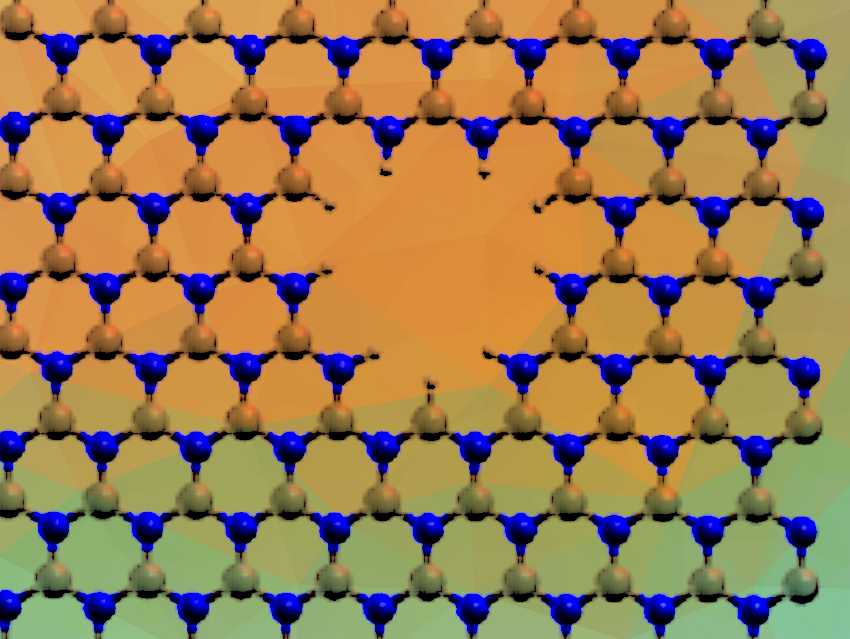In recent decades, advances in membrane technology and energy recovery systems have significantly reduced the energy required to desalinate seawater. A major focus has been on developing membranes with superior selectivity and high water flux. Researchers have proposed membranes made from materials such as graphene, carbon nanotubes, molybdenum disulfide, and hexagonal boron nitride (h-BN). Among these, h-BN stands out for its properties, including high thermal stability, low dielectric constant, and strong mechanical strength, while also offering unique features such as a wide bandgap, electrical insulation, and chemical inertness.
h-BN membranes can have pores of various types and sizes, which are critical for water flow. The difference in the electroaffinity of B and N atoms gives these pores edges with asymmetric charge distributions, resulting in fields that affect the passage of ions and polar molecules. The use of h-BN as a membrane for water desalination is still a relatively new area of research.
Juliana A. Gonçalves and Marcia C. Barbosa, Universidade Federal do Rio Grande do Sul, Porto Alegre, Brazil, and colleagues have investigated how freestanding h-BN monolayers interact with water molecules. They performed calculations based on the density functional theory (DFT) as implemented in the SIESTA code. Their results show that pore shape, size, and edge termination significantly influence membrane deformation, stability, hydrophobicity, and water transport behavior, offering key insights for the design of efficient nanoporous membranes.
The team found that triangular and rhombic pores induce wrinkles in freestanding h-BN monolayers due to repulsion between hydrogen orbitals at their 60° vertices. The addition of N–H or B–H pairs at these vertices mitigates the out-of-plane deformations. Notably, the stability of triangular pores with N–H termination increased significantly with the addition of B–H pairs, whereas the stability of B–H-terminated pores decreased with N–H addition, highlighting a distinct evolution of pore shape based on edge termination.
The researchers also discovered that the combination of H and OH is more effective in stabilizing the edges of rhombic pores compared to using only H atoms, whereas the opposite is true for small triangular pores that cannot accommodate the ·OH radical.
Rhombic pores showed a much higher affinity for water absorption compared to triangular pores, suggesting that pore type strongly affects the hydrophobicity of h-BN membranes and influences water flow through the membrane. In addition, water molecules preferentially formed hydrogen bonds with the N–H-terminated surfaces of rhombic pores, but not with B–N-terminated surfaces, potentially leading to asymmetrical water flow through the pore area.
- Water in nanoporous hexagonal boron nitride nanosheets: a first-principles study,
Juliana A. Gonçalves, Ronaldo J. C. Batista, Marcia C. Barbosa,
Beilstein J. Nanotechnol. 2025, 16, 510–519.
https://doi.org/10.3762/bjnano.16.39




